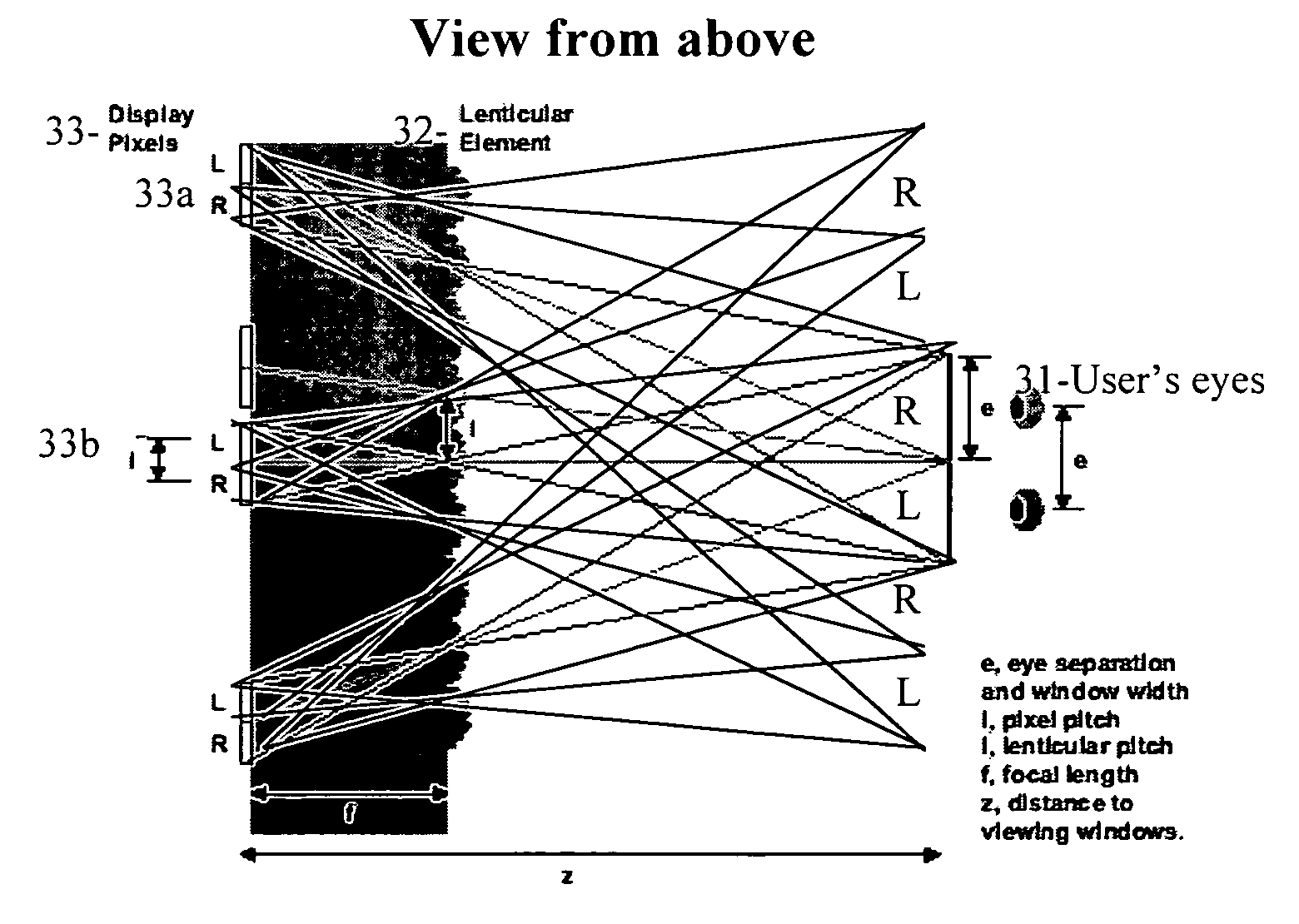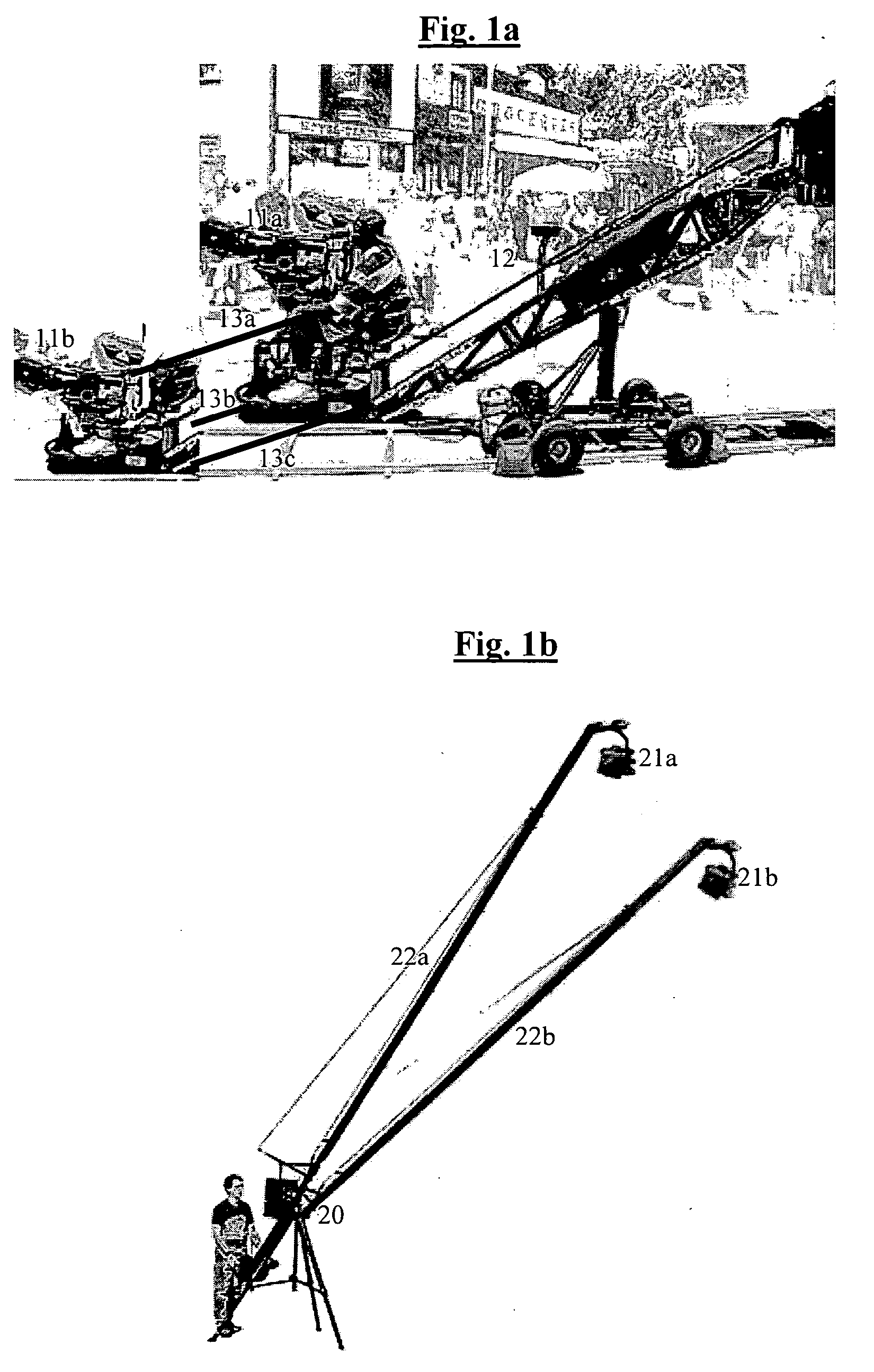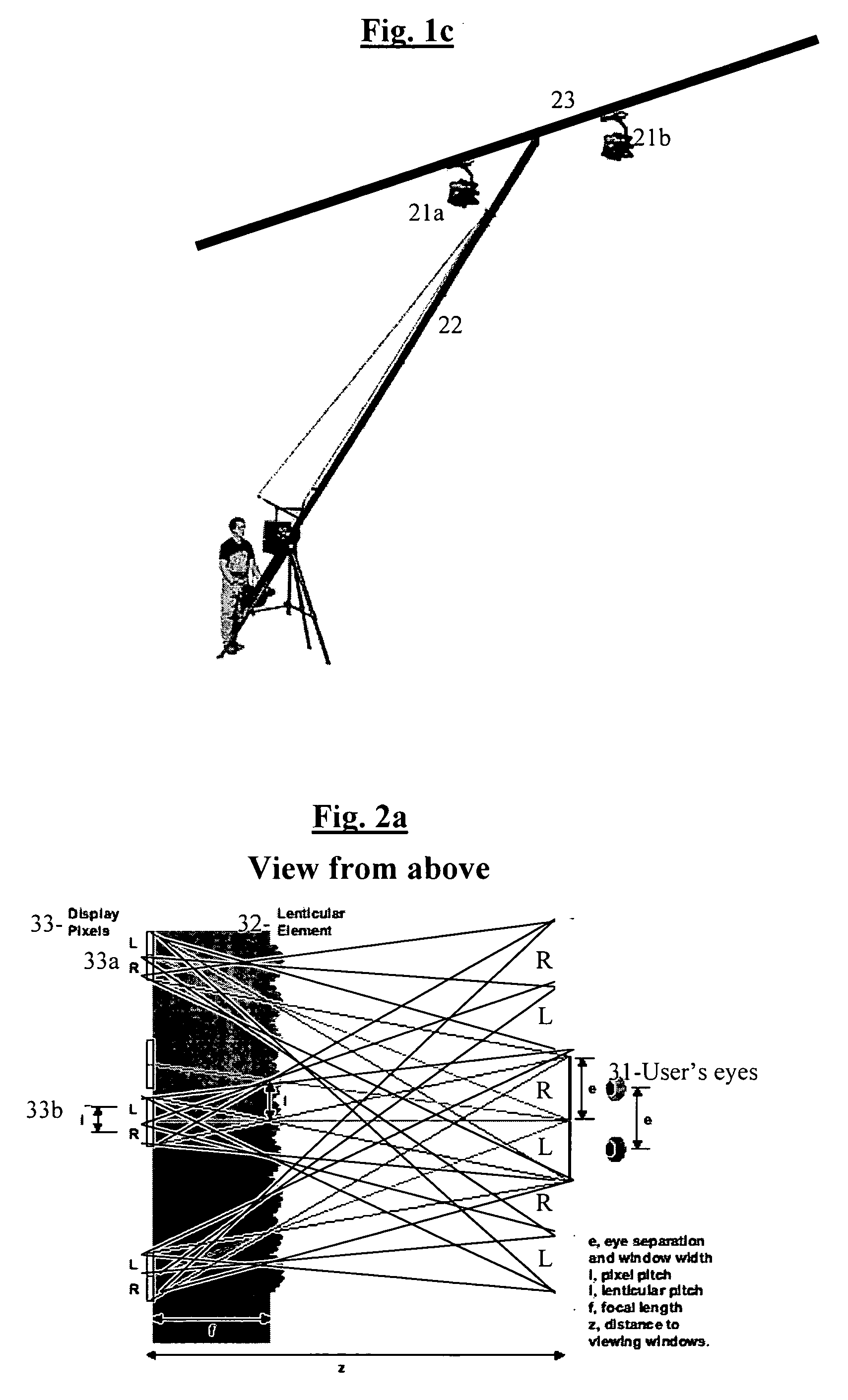System and method for 3D photography and/or analysis of 3D images and/or display of 3D images
a technology of system and method, applied in the field of 3d (three-dimensional) images, can solve the problems of increasing the vertical distortion increasing the cost of the two cameras, and affecting the quality of the image, so as to achieve the effect of efficient generation
- Summary
- Abstract
- Description
- Claims
- Application Information
AI Technical Summary
Benefits of technology
Problems solved by technology
Method used
Image
Examples
Embodiment Construction
[0020] All of descriptions in this and other sections are intended to be illustrative examples and not limiting.
[0021] Referring to FIGS. 1a-c we show an illustration of a few preferable ways for automatically changing the distance and / or angles between the lenses of the two (or more) cameras. For solving the zoom problem, preferably the camera is based on two or more separate units (which can be for example two or three or more parts of the same camera, or 2 or 3 or more separate cameras), which are preferably coordinated exactly by computer control, so that each two (or more) frames are shot at the same time, and focus and / or zoom changes and / or any movements of the two parts are well correlated. So for example the operator can change the focus in one of the cameras for example by mechanical rotation or for example by moving an electronic control and preferably instantly the same movement or change is preferably electronically transferred also to the other camera or cameras. When...
PUM
 Login to View More
Login to View More Abstract
Description
Claims
Application Information
 Login to View More
Login to View More - R&D
- Intellectual Property
- Life Sciences
- Materials
- Tech Scout
- Unparalleled Data Quality
- Higher Quality Content
- 60% Fewer Hallucinations
Browse by: Latest US Patents, China's latest patents, Technical Efficacy Thesaurus, Application Domain, Technology Topic, Popular Technical Reports.
© 2025 PatSnap. All rights reserved.Legal|Privacy policy|Modern Slavery Act Transparency Statement|Sitemap|About US| Contact US: help@patsnap.com



